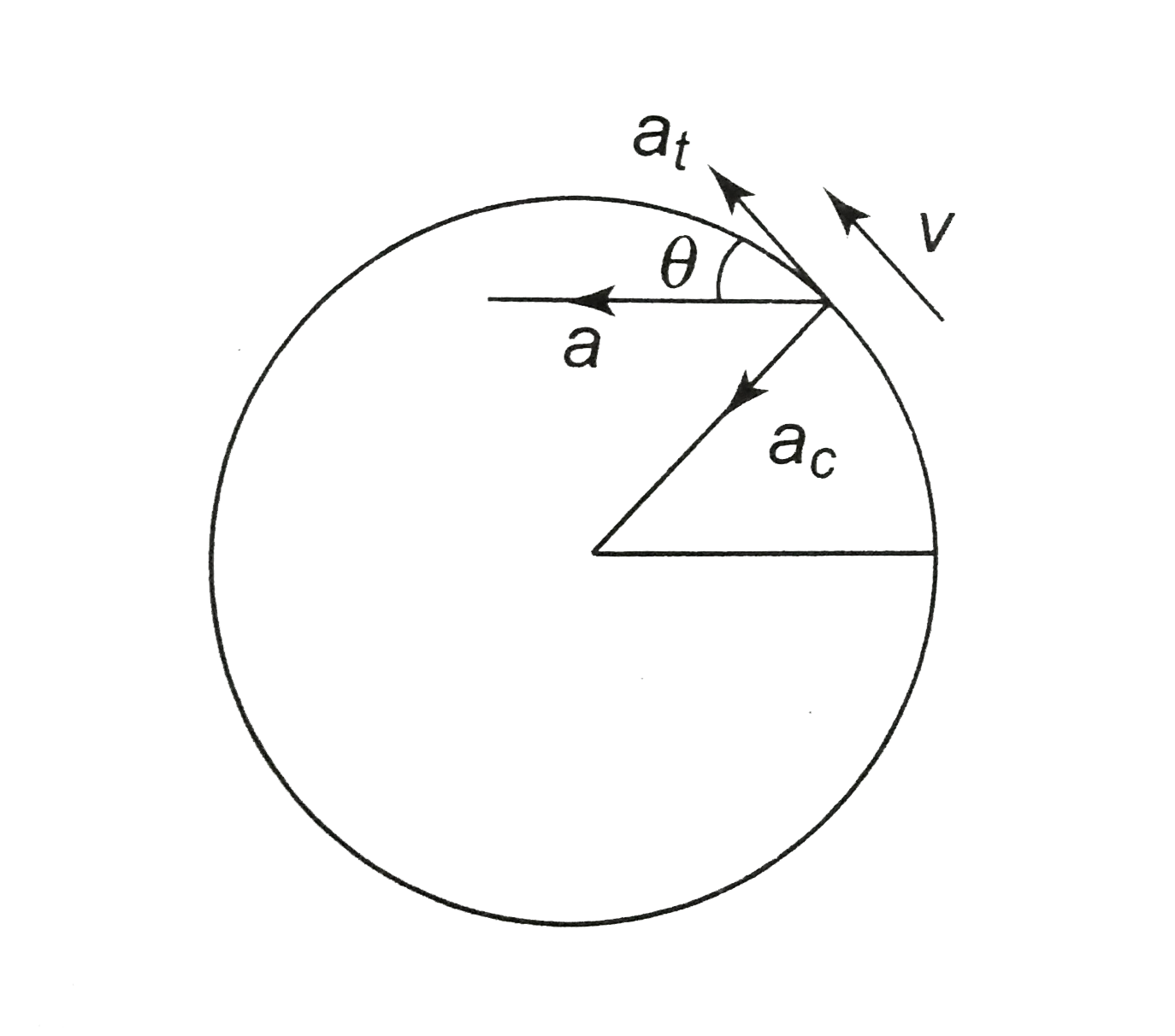A solid body starts rotating about a stationary axis with an angular acceleration α=kt, where k is a constant. How soon after the beginning of motion will the total acceleration vector of an arbitrary point of the body form an angle 60∘ with its velocity vector?

α=kt
dωdt=kt
∫ω0dω=k∫t0tdt
ω=kt22
ac=ω2r=k2t4r4
at=rα=ktr
tanθ=acat
tan60∘=k2t4r4×1ktr
√3=k4t3
t3=4√3k
t=(4√3k)13
Topper's Solved these Questions
Similar Questions
A solid body starts rotating about a stationary axis with an angular acceleration α=(2.0×10−2)trad/s2 here t is in seconds. How soon after the beginning of rotation will the total acceleration vector of an arbitrary point of the body form an angle θ=60∘ with its velocity vector?
View SolutionA solid body starts rotating about a stationary axis with an angular acceleration β = at. How soon after the beginning of rotation will the total acceleration vector of a general point on the body form an angle α with its velocity vector ?
View Solution
Knowledge Check
A stationary wheel starts rotating about its own axis at constant angular acceleration. If the wheel completes 50 rotations in first 2 seconds, then the number of rotations mades by it in next two seconds is
A75B100C125D150A body is rotating around a fixed axis with angular velocity 3 rad/s with constant angular acceleration of 1rad/s2 at some time. Find the magnitude of acceleration of a particle 5 m away from the axis after the body has turned by 90∘.
A5√1+(9+π)2m/s2B5(9+π)m/s2C5m/s2D5√82ms−2A point mass moves along a circle of radius R with a constant angular acceleration α. How much time is needed after motion begins for the radial acceleration of the point mass to be equal to its tangential acceleration ?
A√1αB√RαC√2αD√12α
A solid body starts rotating about a stationary axis with an angular acceleration α=α0cosθ, where α0 is a constant and θ is an angle of rotation from the initial position. Find the angular velocity of the body as a function of θ.
View SolutionA solid body starts rotating about a stationary axis with an angular acceleration β=β0cosφ, where β0 is a constant vector and φ is an angle of rotation from the initial position. Find the angular velocity of the body as a function of the angle φ. Draw the plot of this dependence.
View SolutionA rigid body is free to rotate about an axis. Can the body have non-zero angulalr acceleration of an instant when its angular velocity is zero?
View SolutionA solid body rotates with deceleration about a stationary axis with an angular deceleration β∝√ω, where ω is its angular velocity. Find the mean angular velocity of the body averaged over the whole time of rotation if at the initial moment of time its angular velocity was equal to ω0.
View SolutionA circular disc is rotating about its own axis at constant angular acceleration. If its angular velocity increases from 210 rpm to 420 rpm during 21 rotations then the angular acceleration of disc is
View Solution